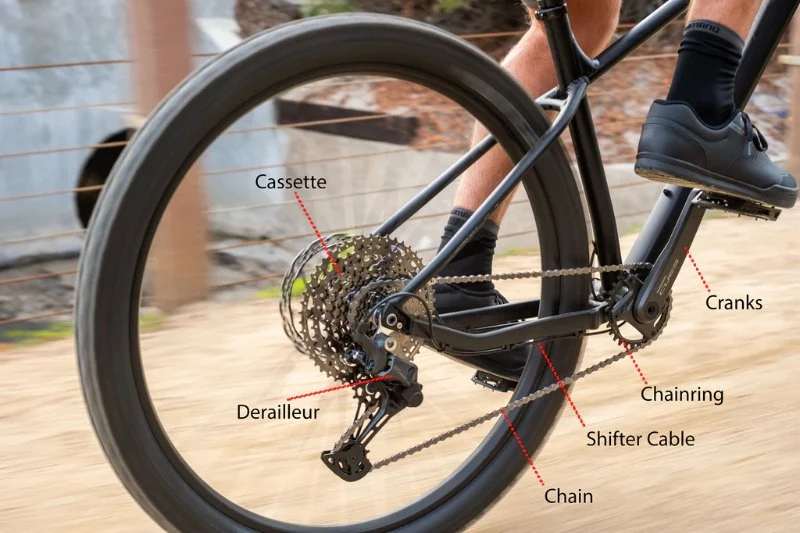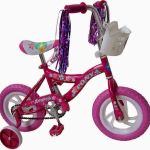
- understanding-1x-vs-2x-drivetrains - Understanding 1x vs 2x Drivetrains
- mechanical-differences-in-1x-and-2x-setups - Mechanical Differences in 1x and 2x Setups
- which-drivetrain-suits-your-riding-style - Which Drivetrain Suits Your Riding Style?
- real-world-experiences-from-cyclists - Real-World Experiences from Cyclists
- maintenance-simplicity-and-durability - Maintenance, Simplicity, and Durability
- making-the-right-choice-for-your-bike - Making the Right Choice for Your Bike
1. Understanding 1x vs 2x Drivetrains
If you’ve shopped for a new bike recently, chances are you’ve come across the terms “1x drivetrain” and “2x drivetrain.” But what do they really mean? And more importantly, which one should you choose?
At a basic level, the difference lies in the number of chainrings on the front crankset. A 1x (pronounced "one-by") system has one chainring up front, while a 2x system has two. While that may sound like a small distinction, it can significantly influence your riding experience—especially when it comes to terrain, shifting behavior, and maintenance.
Need help deciding? Cycling Guider offers tailored drivetrain setups and expert guidance depending on your riding goals.
2. Mechanical Differences in 1x and 2x Setups
2.1 Gearing Range and Steps
A 2x drivetrain provides a wider range of gears and smaller steps between them. This setup is ideal for riders who want smooth cadence control across diverse terrains, such as road cyclists and touring riders. On the other hand, 1x drivetrains tend to have fewer total gears but are simpler and more intuitive to use, which is why they are favored by mountain bikers and gravel riders.
2.2 Weight and Complexity
A 1x drivetrain removes the front derailleur, shifter, and one chainring, making the bike slightly lighter and less mechanically complex. This reduction not only saves grams but also eliminates potential shifting issues, especially when riding over rough terrain.
2.3 Drivetrain Wear
Because 1x setups stretch a single chainring to cover a wide range, the chain and cassette tend to wear faster than in 2x setups. That said, high-quality components and good chain line management can mitigate excessive wear.
3. Which Drivetrain Suits Your Riding Style?
3.1 For Mountain Biking and Technical Trails
Most modern mountain bikes now come with 1x drivetrains for good reason. The simplified setup lets riders focus more on line choice and less on gear shifting, while the clutch-equipped rear derailleurs help reduce chain slap and dropped chains.
3.2 For Road and Endurance Riders
Road cyclists still often prefer 2x drivetrains because of the more precise cadence control and better climbing gears available through the two chainrings. When every watt counts, having the right gear for each grade makes a difference.
3.3 For Gravel, Bikepacking, and Mixed Terrain
This is where things get interesting. Many gravel bikes now feature 1x drivetrains to cut down on maintenance and simplify gear choices, but long-distance riders sometimes still prefer the efficiency and versatility of a 2x setup. Choosing comes down to your route profile and personal preference.
4. Real-World Experiences from Cyclists
4.1 Emily’s Adventure Across Patagonia
Emily, a bikepacker who spent two months riding across Patagonia, swears by her 1x11 SRAM setup. “I didn’t want to fiddle with front gears in the middle of nowhere. My 1x drivetrain gave me all the range I needed, and I could focus on enjoying the ride—not adjusting derailleurs.”
4.2 Leo’s Road Racing Season
Leo, an amateur road racer in California, moved back to a 2x drivetrain after testing a 1x for three months. “I loved the simplicity, but I missed the fine-tuned gear changes, especially during group rides and climbs. Switching back helped my performance and confidence.”
Want to explore these options hands-on? Cycling Guider offers demos and detailed comparisons of 1x and 2x bikes so you can make an informed decision.
5. Maintenance, Simplicity, and Durability
5.1 1x Wins for Low Maintenance
Fewer components mean fewer things to clean, adjust, or break. For riders who aren’t mechanically inclined or who often ride in muddy or dusty conditions, 1x drivetrains offer clear advantages.
5.2 2x Is More Delicate but Long-Lasting
A well-maintained 2x drivetrain can last a long time and give excellent performance. But it does require more attention—derailleur adjustments, front shifting calibration, and more frequent chain cleanings.
5.3 Chainline and Wear Considerations
1x drivetrains often experience more extreme chain angles, which can lead to faster cassette wear. However, newer 1x systems are optimized for better chainlines and shifting precision.
6. Making the Right Choice for Your Bike
6.1 It’s Not Just About the Numbers
Choosing between a 1x and 2x drivetrain isn’t only about gear count—it’s about how you ride, where you ride, and what you value most: simplicity or flexibility.
6.2 Terrain and Travel Style
Do you often ride rolling terrain, where small gear shifts matter? Or do you prefer trail adventures where rugged simplicity rules? Matching your drivetrain to your routes is key.
6.3 Budget and Upgrades
Price can also be a deciding factor. High-end 1x drivetrains are now on par with 2x in terms of performance, but entry-level 2x systems still offer value with broad gear ranges.
Still unsure? Let the experts at Cycling Guider help you evaluate your needs and build the perfect drivetrain configuration for your next ride.







 Billet BMX5.0 (2 reviews)
Billet BMX5.0 (2 reviews) Far East Children Bicycle Factory1.0 (1 reviews)
Far East Children Bicycle Factory1.0 (1 reviews) Archer Motorsports, Inc.4.0 (8 reviews)
Archer Motorsports, Inc.4.0 (8 reviews) YEP Bike Works4.0 (55 reviews)
YEP Bike Works4.0 (55 reviews) Gorham Bike & Ski4.0 (498 reviews)
Gorham Bike & Ski4.0 (498 reviews) Alchemy Bikes4.0 (37 reviews)
Alchemy Bikes4.0 (37 reviews) How to Teach Kids to Ride a Bike: A Step-by-Step Guide for Parents
How to Teach Kids to Ride a Bike: A Step-by-Step Guide for Parents Tips for Riding on Busy City Streets: Smart Strategies for Urban Cyclists
Tips for Riding on Busy City Streets: Smart Strategies for Urban Cyclists Best US National Parks for Mountain Biking: Ride Epic Trails Across America
Best US National Parks for Mountain Biking: Ride Epic Trails Across America Best Aero Helmets for Time Trials and Racing
Best Aero Helmets for Time Trials and Racing How to Clean and Lubricate Your Bike Chain Like a Pro
How to Clean and Lubricate Your Bike Chain Like a Pro 10 Must-Have Items for Long-Distance Cycling Trips
10 Must-Have Items for Long-Distance Cycling Trips